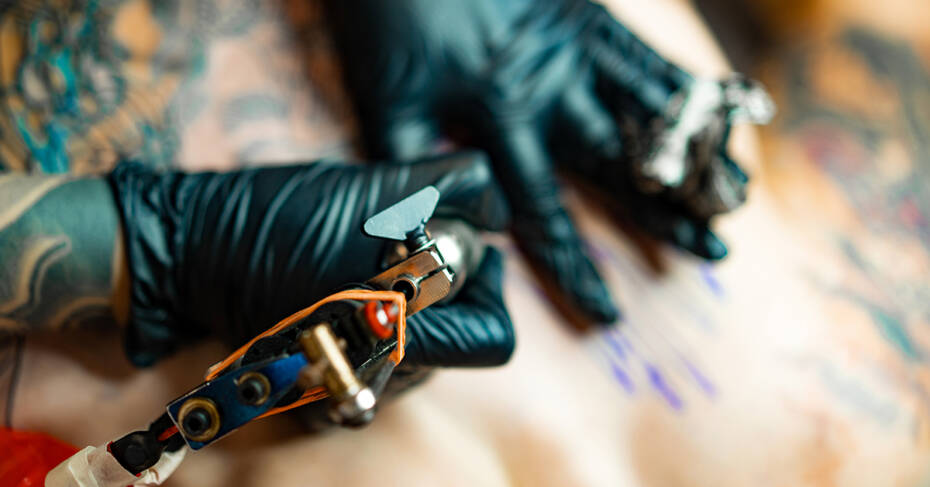Tattoo aftercare is the process of looking after your new tattoo yourself. Tattoo aftercare is one of the most important parts of getting a tattoo – in fact, tattoo artists say that it is 50% of the whole process!
Let’s face it – tattoos are expensive and you want to make sure you look after your fresh tattoo properly in order for it to look great over time and to avoid needing touch-ups.
If your tattoo appointment is coming up or you have just gotten a brand new tattoo and you are wondering how to look after your tattoo, we are here to help! We will take a look at a few different tattoo aftercare methods as well as do’s, don’ts, and risks involved with each process.
We will answer any questions you may have about the tattoo healing process to make sure you heal your new tattoo perfectly.
- There are many different healing methods for tattoo aftercare, but the best thing to do is to listen to your artist and follow their method. They know what works best for their style of tattooing.
- Research your studio carefully to make sure that they are clean and sterile, and will give you the best tattoo you can get. Tattoo aftercare won’t mean anything if the studio is unsanitary and the artist is bad.
- Tattoos take up to 2 months to fully heal. You may experience some itchiness, flaking, and color changes during this time.
Easy and Effective Tattoo Aftercare Methods To Heal Your Tattoo Like a Pro
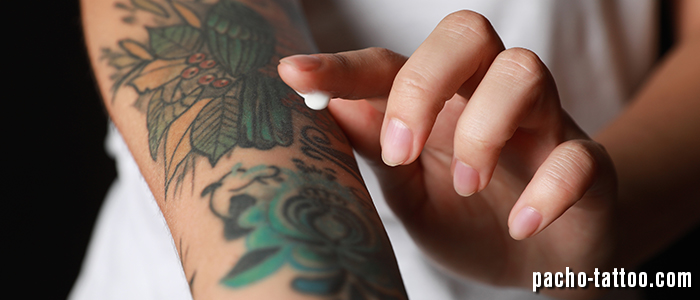

Importance of Tattoo Aftercare
It is extremely important to take care of your new tattoo because it is essentially a fresh wound. The last thing you want is an infection or more serious complications. The process of tattooing can be quite traumatic to your skin and just like any injury that may occur on your skin, you need to look after it.
But on top of that, you also want your tattoo to heal well for aesthetic reasons. If you take aftercare seriously, your tattoo will look beautiful for years to come.
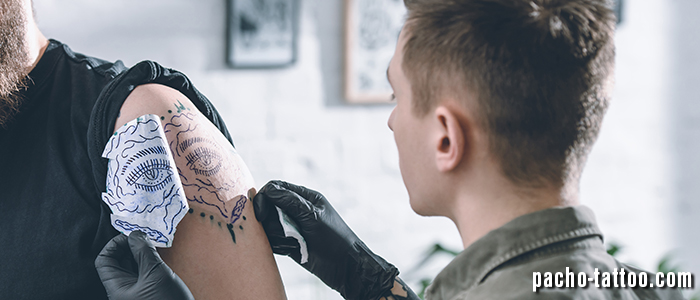

Tattoo Aftercare: Dos and don’ts
- Do not get tattooed in an unsanitary and untrusted tattoo studio. Always do your research and make sure the studio is reputable.
- Inform your artist if you have any allergies – an allergic reaction will cause your tattoo to heal badly from the get-go.
- Follow your trusted aftercare method diligently and if you think you may have run into complications, please ask your artist for their help and advice.
- Do not scratch your new tattoo. Rather pat it lightly with clean hands if it is itchy.
- Do not expose your tattoo to water for extended periods of time – a quick 15min shower is ideal. Do not put your fresh tattoo in baths, oceans, dams, rivers, etc.
- Do not let your pet lick your tattoo! Believe it or not, some people think this helps the healing process, but it does not. You can run the risk of contracting a serious infection.
- Do not exercise excessively for the first 5-7 days after getting your tattoo. Sweat and friction are not good for a new tattoo.
- Avoid direct sun exposure for the first 2 weeks of having a fresh tattoo. The sun can damage a new tattoo.
Step-by-Step Tattoo Aftercare Guides
1. Saniderm
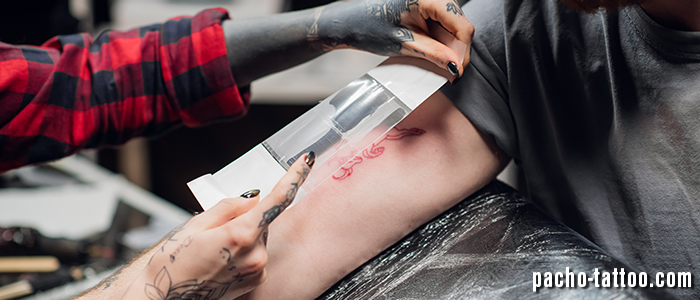

Saniderm is a protective barrier that looks like a see-through adhesive medical bandage that is placed over your tattoo once it is finished.
It is breathable and keeps germs out of your tattoo.
This is a fairly new tattoo aftercare method, but we have had great results with it and there are a lot of different brands on the market. If you have a plaster allergy, we do not recommend using this method. Here’s how to apply it:
- Your artist will disinfect the area around the tattoo using 90% alcohol – it is important to make sure the skin is clean so that the Saniderm sticks properly. You will leave this bandage on for 24 hours and will be given a second piece to apply at home.
- After 24 hours, you will slowly remove the bandage (I recommend doing this in the shower) and give the tattoo a good wash with unscented soap and clean hands. Pat it ry with a disposable paper towel. You may notice that there is an “ink sac” under the Saniderm. This is completely normal as it is excess blood, ink, and lymph that would normally form a scab on your tattoo.
- Cut your piece of Saniderm to fit over your tattoo with an extra 1-inch border around it. If you round the edges, it will be more comfortable.
- Remove the white papery layer from the Saniderm and stick it onto your tattoo and then remove the top layer and smooth any air bubbles out.
- Keep this bandage on for 5-7 days. It can be removed sooner if you notice an allergic reaction or if water gets underneath the bandage.
- To remove the Saniderm, run it under some lukewarm water to help remove the adhesive. Slowly peel the Saniderm off of your tattoo and throw it away. You can then wash your tattoo with scent-free soap and clean hands. Allow it to air dry and apply a thin layer of moisturizer.
- At this point, you can wash and moisturize your tattoo the same way you would the rest of your body but this may differ from person to person. If you feel your tattoo still needs some extra attention then feel free to follow a standard wash and moisturize regime until your tattoo is fully healed.
We love this tattoo aftercare method because it is so easy. You don’t have to adjust your daily schedule at all to accommodate tattoo aftercare, you simply apply it and forget about it. The only downside is an allergic reaction as these can be very painful and prolong the healing time.
2. Standard Tattoo Aftercare
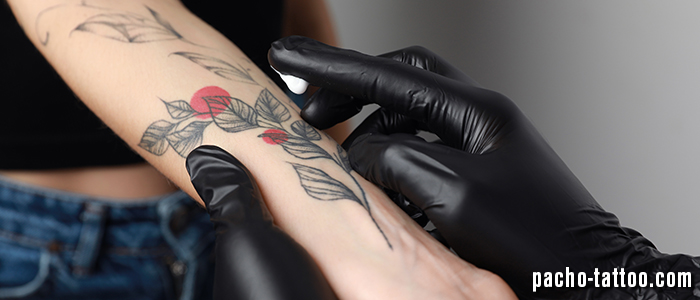

Standard tattoo aftercare refers to the age-old “normal” tattoo aftercare that is used across the world in most tattoo studios.
It involves daily washing and moisturizing your tattoo with unscented soap and unscented cream.
- Your artist will wrap your tattoo with saran wrap and tape and instruct you to leave this on for 3 hours or overnight. This will allow your skin to close its pores before exposing it to the air.
- Remove the saran wrap and wash your tattoo with lukewarm water and unscented soap – make sure your hands are clean. Do not use a sponge or washcloth! You want the tattoo to almost feel matte – this will mean that all of the excess blood, ink, and lymph has been removed. Let the tattoo air dry or pat it dry with a disposable paper towel.
- Once the tattoo is dry, you can apply a very thin layer of your chosen tattoo aftercare ointment or plain scent-free aqueous cream like Aquaphor. Find out what brand your artist recommends. Remove any excess ointment as too much can cause healing issues.
- You will repeat the washing, drying, and ointment application process twice per day in the morning and in the evening for 2 weeks. You can apply ointment throughout the day if your tattoo feels dry and itchy.
We like this tattoo aftercare method as you are able to keep a close eye on your tattoo while it heals. Because it isn’t constantly covered, it is easy to keep an eye out for infections and irritations and quickly treat them.
We usually recommend this aftercare method to first-timers because it is good to understand how your skin reacts to getting a tattoo which will make looking after future tattoos easier. This being said it is also a fairly tedious healing method.
The tattoo is exposed to your immediate surroundings and can get irritated by clothing and come into contact with dirty surfaces.You need to be mindful of your movements and surroundings when choosing this healing method.
3. Wet healing
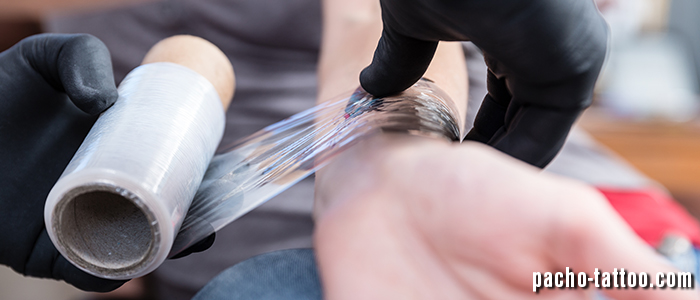

Wet healing is a method more commonly used by experienced tattoo collectors and is recommended for high-movement areas like knees, hands, and elbows.
It is also recommended for tattoos that are heavily saturated with loads of color.
It is a process by which you clean and wrap your tattoo multiple times per day and is best suited to you if your work has access to a clean bathroom or if you work from home.
- Your artist will put an initial covering of saran wrap on your tattoo and instruct you how long to keep it on. In most cases, it is up to 3 hours, or overnight. You will then remove the initial saran wrap covering and throw it away. Gently wash your tattoo with clean hands and unscented soap and warm water and remove all excess blood, ink, and lymph.
- Allow your tattoo to air dry or pat it dry with a clean disposable paper towel. Some artists may recommend applying a thin layer of tattoo aftercare ointment, but I recommend leaving it dry to avoid it becoming too moist under the new piece of wrapping.
- Take a new piece of saran wrap and wrap it all the way around the part of the body where the new tattoo is. If it is on one of your limbs, this is easy and you can tape the bottom and top shut with medical tape. If it is on your torso, you may need to cut a piece of saran wrap that is big enough to cover the area and secure it well with medical tape.
- Repeat the cleaning and wrapping process every 4 hours for 4-7 days. You will need to replace the wrapping multiple times per day but it can be left on overnight while you sleep.
- Once you feel that your skin has finished flaking off and is no longer feeling sensitive, you can remove the saran wrap and moisturize your tattoo once a day until it is fully healed.
We recommend this method for areas of the body with high movement as it does not allow any scabs to form, leaving the new tattoo moist enough to move without cracking. Your tattoo will also be less vulnerable to developing infections as it is not exposed to any dirty surfaces or clothing. It also speeds up the healing process as it prevents any scabs from forming.
This method is very time-consuming and can be impossible to do during work hours.
It can also be a pain to have to remember to pack your supplies if you leave the house.
On hot days, it can get quite sweaty and itchy or can sting.
If you don’t follow a strict cleaning regime you can trap unwanted bacteria under the saran wrap, leading to infection. If you choose this method for healing, follow your artists instructions to the letter!
What To Expect From Day 1 to Day 30
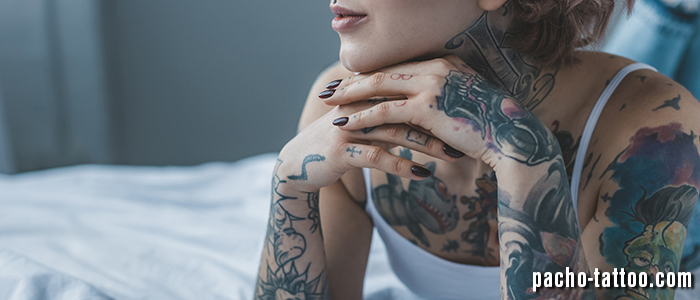

Day 1
- Your tattoo should be wrapped by your artist in a covering such as saran wrap which will be left on for 3 hours, or Saniderm which will be left on for 24 hours.
- You will notice that your tattoo will push out blood, plasma, and excess ink over the next 12 – 24 hours.
- Some people will wash and rewrap their tattoos until the next morning to avoid staining clothing.
- Your tattoo will be very sensitive at this point, it will feel like a bad sunburn.
Day 2 – 3
- You may still notice some excess ink coming out of your tattoo 2 to 3 days after getting the tattoo.
- Don’t worry, this is completely normal.
- Your tattoo will start to fade or “haze over”.
- This is only temporary as it is just the scab forming and will settle once the tattoo is healed.
Day 4 – 6
- This is where your tattoo will start to dry out and you will see flaking of the skin.
- There shouldn’t be scabs that are large or exceptionally painful.
- You may notice tightening of the skin especially around and on the line work.
- As the top layer of skin tightens you may see what looks like a blowout but do not worry, the line work will go back to normal once it has healed.
- Do not pick at scabs or flakes as this can damage your tattoo and cause scaring. Rather gently wash or apply an ointment to soothe the itch.
Day 7 – 14
- The scabs or flakes will begin to naturally fall off over the next couple of days.
- This stage of healing can be extremely itchy but remember not to scratch! Pat your tattoo to relieve the itchiness.
Day 15 – 30
- All scabs and flakes should be gone by now, but some people’s tattoos take longer to heal than others.
- You should be able to get a good idea of what your completely healed tattoo will look like at this point.
- You may also notice a shine over some sections of your tattoo – this is what we call “silver skin” and is your skin healing and will go away eventually.
- After 30 days you can contact your artist if you need any touch-ups and all tattoo aftercare can be stopped.
How long does a tattoo take to heal
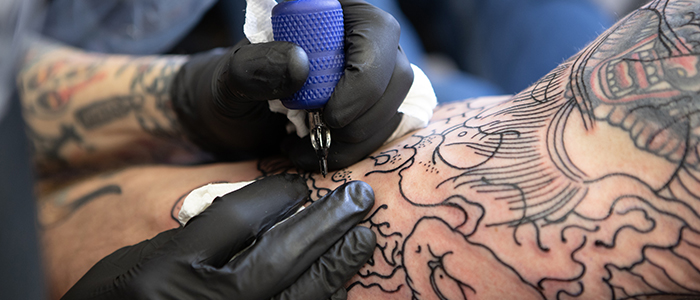

Photo by Benjamin Lehman from Unsplash
A tattoo typically takes 3-4 weeks to fully heal if you have no issues during the healing process. Light fine-line tattoos tend to heal a bit quicker whereas larger and more saturated tattoos, such as full-color work, will usually take longer to heal.
Possible complications include allergies to aftercare products or products used during the tattooing process, infections from your surroundings or from a dirty tattoo studio, trauma to the tattoo such as a dog jumping on it or long periods of sun exposure, or something more serious like a staph infection that could land you in hospital. Most of these complications are easy to treat and the worst side effect may be needing to go on antibiotics, and your tattoo healing badly and needing a rework or touch-up.
FAQ
Is tattoo aftercare with Saniderm or Tegaderm a good idea?
Yes absolutely! This is one of the most popular ways of healing tattoos currently. Make sure you understand the instructions fully before applying it or ask your artist to do it for you.
Can I use coconut oil as a tattoo aftercare product?
Yes, you can. However, we may not recommend it if you haven't used it before. Coconut oil can clog pores resulting in complications. Coconut oil is great for people with extremely sensitive skin who cannot use any chemical products.
Which is the best tattoo aftercare cream?
There is no best tattoo aftercare cream, only the best one for you. Everyone’s skin is unique and reacts differently to creams and lotion. If you are unsure of what to get, I would recommend a simple cream such as Aquafor.
Is it mandatory to use antibacterial soap after getting a tattoo?
You can either use antibacterial soap or a completely plain, unscented pure soap. Soaps to avoid are those with added scents and exfoliants.
Is it OK to shower after getting a tattoo?
Yes, it is a necessity! Your new tattoo can get wet but it cannot soak in water so quick showers are preferred.
Can you sleep with a new tattoo uncovered?
Yes, you can, as long as you don't mind doing laundry the next day as ink and blood will seep into your covers. We recommend covering your tattoo for the first night with a saran wrap covering.
How healed is a tattoo after a week?
Your tattoo will be dry and scabby after one week.
When can I work out after receiving a tattoo?
One - two weeks depending on how the aftercare process is going.
Can I leave my tattoo uncovered after 1 day?
Yes, you can, depending on which aftercare method you use, but be conscious about what your tattoo will come into contact with throughout the day.
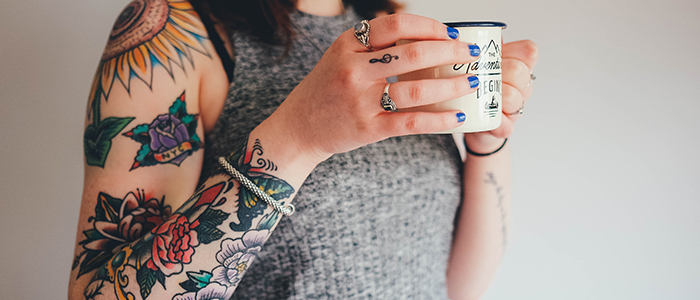

Photo by Annie Spratt from Unsplash
Tried and Tested Tattoo Aftercare Methods For Healing New Tattoos Perfectly
There are many different ways to heal your tattoo, and it may take a few tries for you to decide which one works the best for you.
Each artist will also recommend a different way to heal their tattoos and it is always best to listen to what they recommend.
The tattoo industry is always evolving and there will always be new and improved ways to heal your tattoos.
Our favorite method is using Saniderm and provided you are not allergic to it, it may become your favorite method as well.
Congratulations on your new tattoo and happy healing!
